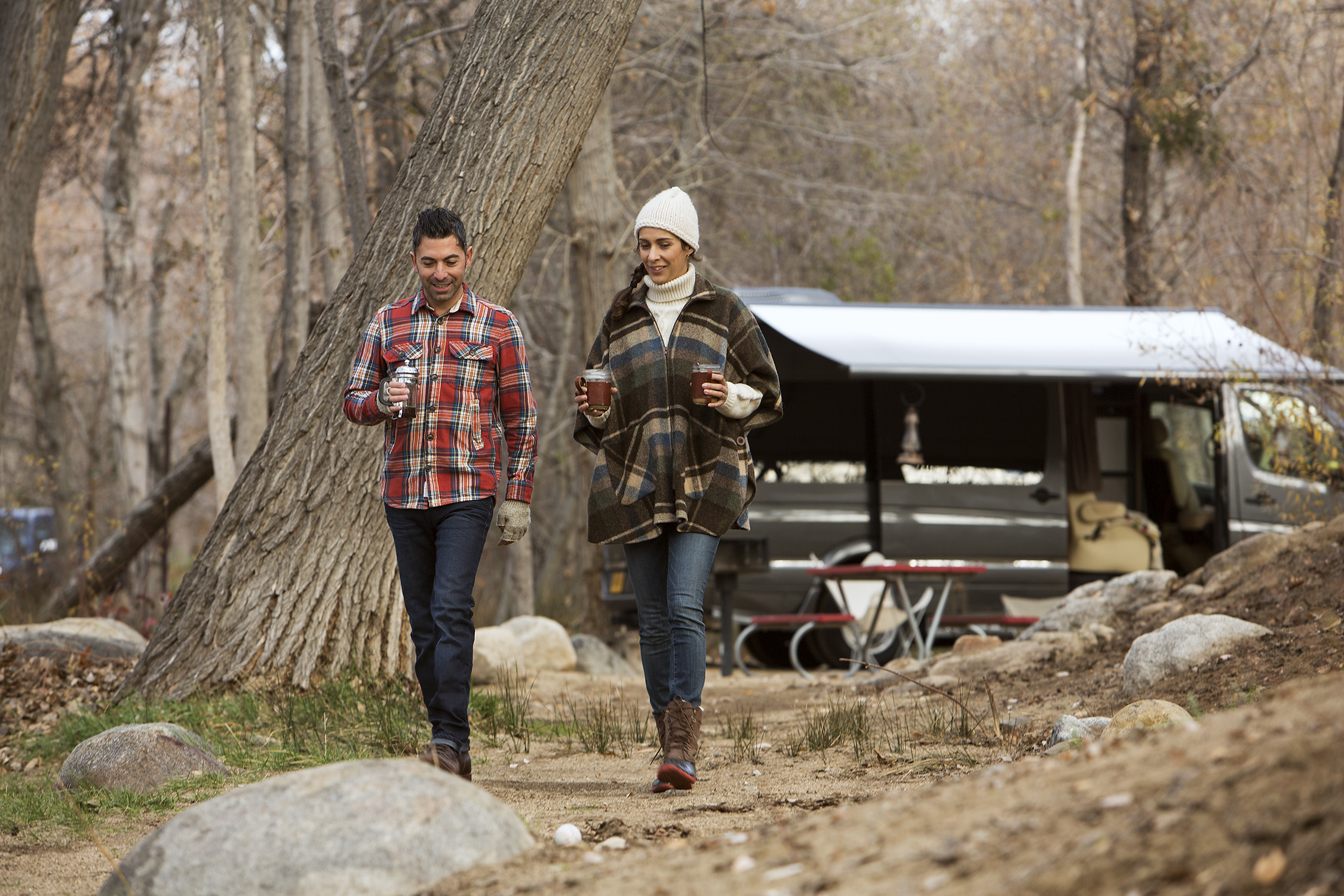If this is your first season RVing in the fall or winter, whether you’re full timing or just want a different camping experience, it pays to be prepared.
Save the surprises for the summertime; when the weather turns cold, you want to be sure of what you and your RV can handle. Here’s how you can beat the chill and have a pleasurable winter camping experience.
- Make sure your RV is well-insulated. You need to block the wind, protect vehicle components from freezing, and keep the heattrapped inside the RV for maximum warmth. Sealing around windows and doors is essential. Check the weather stripping for cracks and caulk areas around seals that need replacing. Heavy drapes can help block cold drafts as well as separate areas of the RV so that you don’t need to heat the entire RV all the time; you can heat compartments. Seal skylights and roof vents tightly so that heat doesn’t escape through the roof. RV skirting can be a lifesaver for your RV’s mechanical components and water lines, plus keep the heat trapped under the RV where you need it most.
- Prep your RV. A frozen or broken-down RV is of little use to you, apart fromshelter, which is very important. However, an RV is simply a large car and we all know how cold cars get when they sit idle without any heat! Empty both of your water tanks before you leave on a trip and add special antifreeze to each holding tank to keep the dump valves from freezing. Foam pipe insulation can be used to surround pipes, again so that they don’t freeze. Use heat tape to insulate your sewer and freshwater hoses and store them in warm compartments. And most importantly, make sure your furnace is in good working order. Test it and remove any debris or dust as those are potential fire hazards. If you don’t have a furnace, many RVers like portable electric space heaters; however, you need to make sure you have adequate ventilation while they are running, as they can create extra condensation, and that your carbon monoxide detectors are working well.
- Take care of your engine. Cold temperatures and engines sometimes don’t play well together. Inspect your batteries for signs of corrosion and make sure they are fully charged and securely connected. Partially charged batteries run the risk of dying out when it’s cold. Check the antifreeze and make sure it’s filled to the proper concentration. Most of all, use an engine block heater to warm your engine before you start it, three to five hours before you intend to turn the ignition if the outside temperature is below freezing.
- Pack the gear. You already know you should have a first aid kit with all the bandages, disinfectants, and ointments you need. But you need some additional items, too: a thermal blanket and extra food and water should be a part of your emergency supplies. An extra scraper and a shovel should also be on the list. Add a small space heater to your list of supplies to help keep your water pump from freezing.
- Wear the right clothes. Cotton is great in the summer – airy and quick to dry. But you need something a little more robust in the cold temperatures. Wool is a great choice as it can be layered, keeps your body heat trapped close to your body, and you don’t need much of it to get warm. Layers are key, including waterproof outerwear. Fleece-lined pants and jackets can also help you keep away the winter chill.
- Take care at campsites. Find a campsite that has more direct sunlight rather than a site in the shade. If there’s a heavy snowfall overnight, check your exhaust pipe to make sure it’s not covered by snow; if it is, then get rid of the snow around it.
Cold-weather RVing can be a refreshing break from the regular high season of camping, and it gets you outside to enjoy the abundant outdoor recreation opportunities that exist all across Michigan. It’s a brand-new adventure, and as long as you and your RV are prepared, a fun one, too.

